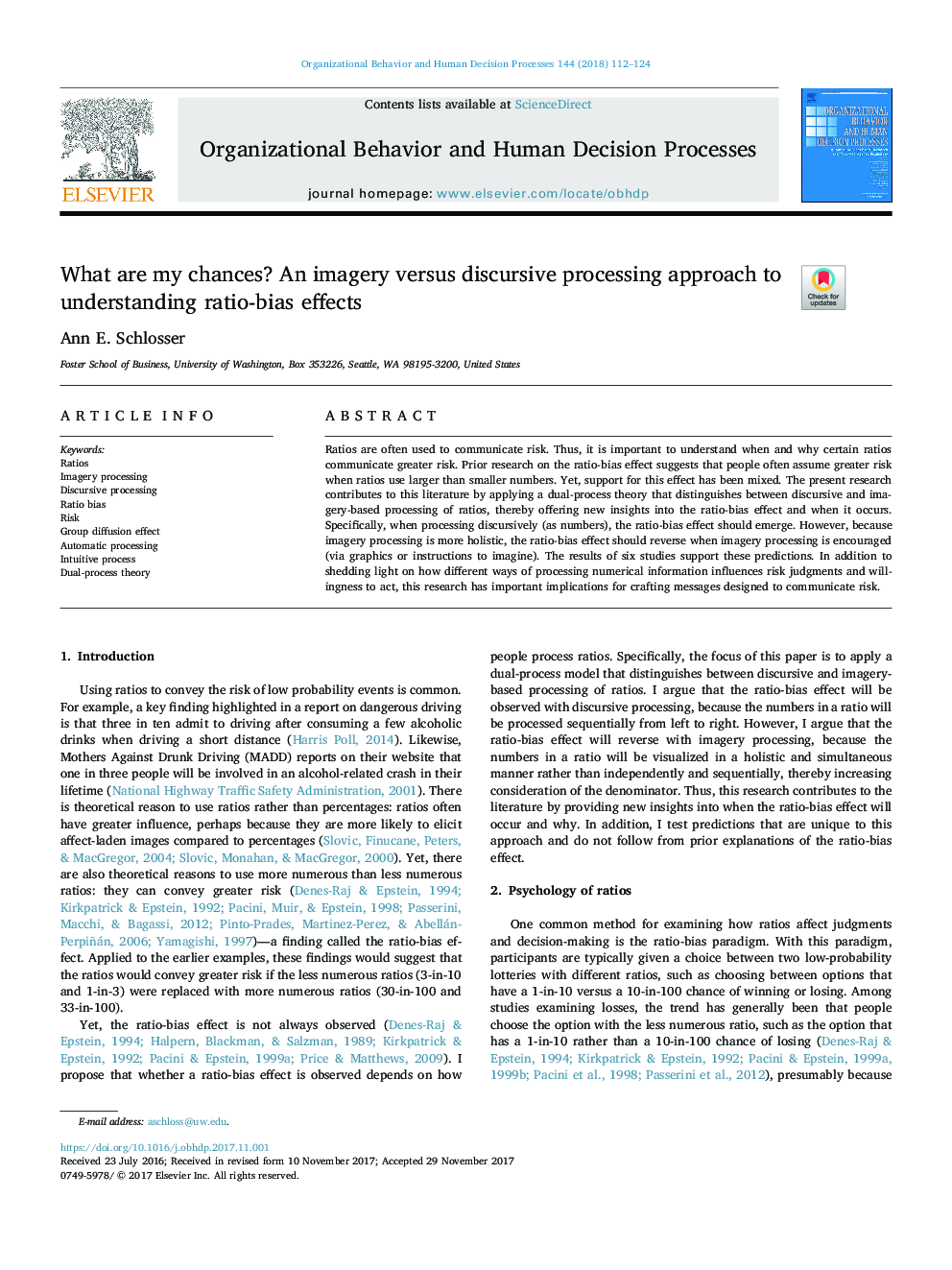| Article ID | Journal | Published Year | Pages | File Type |
|---|---|---|---|---|
| 7248056 | Organizational Behavior and Human Decision Processes | 2018 | 13 Pages |
Abstract
Ratios are often used to communicate risk. Thus, it is important to understand when and why certain ratios communicate greater risk. Prior research on the ratio-bias effect suggests that people often assume greater risk when ratios use larger than smaller numbers. Yet, support for this effect has been mixed. The present research contributes to this literature by applying a dual-process theory that distinguishes between discursive and imagery-based processing of ratios, thereby offering new insights into the ratio-bias effect and when it occurs. Specifically, when processing discursively (as numbers), the ratio-bias effect should emerge. However, because imagery processing is more holistic, the ratio-bias effect should reverse when imagery processing is encouraged (via graphics or instructions to imagine). The results of six studies support these predictions. In addition to shedding light on how different ways of processing numerical information influences risk judgments and willingness to act, this research has important implications for crafting messages designed to communicate risk.
Related Topics
Social Sciences and Humanities
Business, Management and Accounting
Marketing
Authors
Ann E. Schlosser,
